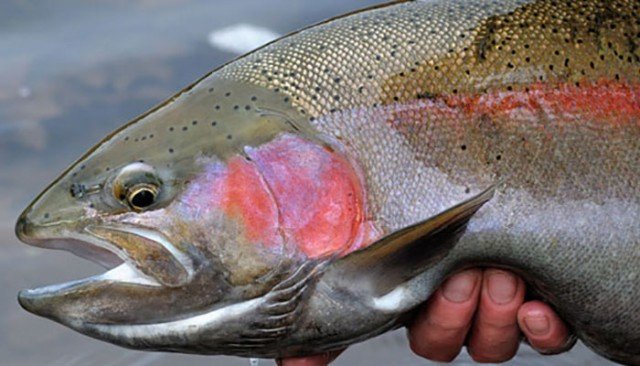Fishing for giant trout in the pond
Fishing for giant trout in the pond
Date: 08 October 2015In: Guides and tutorials, Sport fishing, Techniques and fishingLinesNo comment
Very often the owners of ponds where sport fishing is practised organize events by introducing real giants of 3 kg and more. Fishing such a bestion is undoubtedly difficult as giant trout is also synonymous with wise trout. Special attention must be paid to every detail, from the equipment to the firing and fitting.
Equipment
The fishing rod to be used for giant trout can be hard and powerful but makes the fight less tasty. For lovers of thrill and adrenaline, the best way to capture the big ones is with ultra-light equipment that guarantees greater satisfaction and, like "heavy" equipment, allows you to recover even the largest trout.
On the basis of the above, the tools to be carried will consist of telescopic light barrels or three pieces not exceeding 4.2 meters, with soft actions, almost at the limit, usually referable to three large families: 0-3 grams, for research fishing, 1-4 grams for fishing with small slides, 2-6 grams, for slide or plumbing, 3-8 grams for large slides or plumbing, 4-12 grams for large bombards or plumbing.
As with the fishing rods, the reels to be used are those of small (1000-2000) and medium size (2500-3000), with slow recovery ratio.
The line to be imbobinare will be 0.14/0.16 with good breaking load while, the terminals of 0.12/0.14 in fluorocarbon. The terminal length varies depending on the ballast to be used, for example:
90/120cm for flues
120/150cm for slides
150/200cm for small bombards
The terminals are so long to allow the bait to work on the bottom at all times. Thinking of what happens in water you can understand that you will have in the order slide, swivel, terminal and bait. All movements of the barrel are transmitted to the slide, which in turn, with a short terminal, transmits them to the bait and makes it go up and down.
If the terminal is long, movements arrive late at the bait, which continues to work on the bottom.
The lines
Here are some simple frames that can be used in each of these techniques, obviously adapting the length of the terminal where necessary:
Lead Frame
Slide Frame
Floating frame
Conveyor frame
The technique
Three techniques can be used to try and catch these trout, perhaps alternating between them when there are no catches.
The first of the three is to launch, recover, stimulate and then stop. The pause, sometimes, is fundamental to allow the fish to chase the bait and, on the most beautiful, decide to swallow it.
The second is the already analyzed tremarella that, thanks to some touches with the chimney, provide movement to the bait. Obviously we can't talk about exact science and results assured in neither of the two previous cases but, not desperate, there is a third alternative called "Tic-Toc". The "Tic-Toc" technique consists in impressing intermittent touches to the bait, by means of the elasticity of the barrel, going up and down, opposing lateral movements, with constant whirlwind turns. You don't need to be repetitive throughout the recovery as well as tremarella.
If you want to opt instead for a technique that uses the float, you must use a floating pen that allows you to hold the bait stationary on the bottom. This technique is perfect for listless trout and they don't want to move during cold weather.
Statistically, according to various attempts in various circumstances, the most productive was the tremarella.
